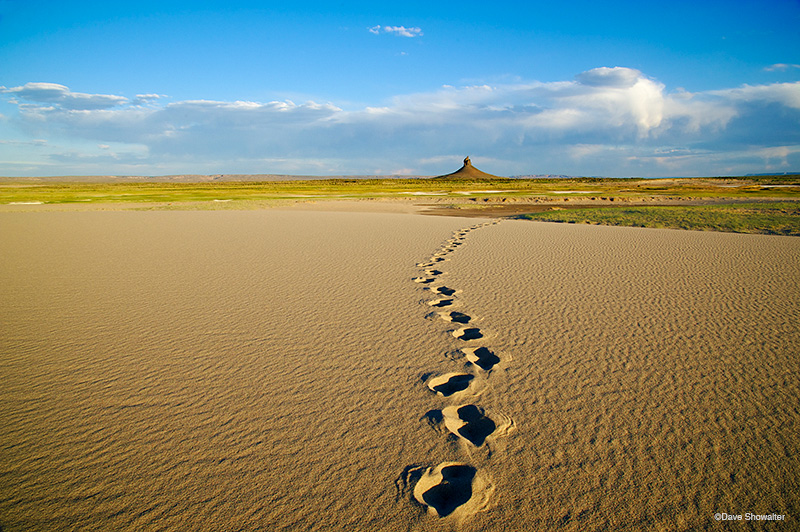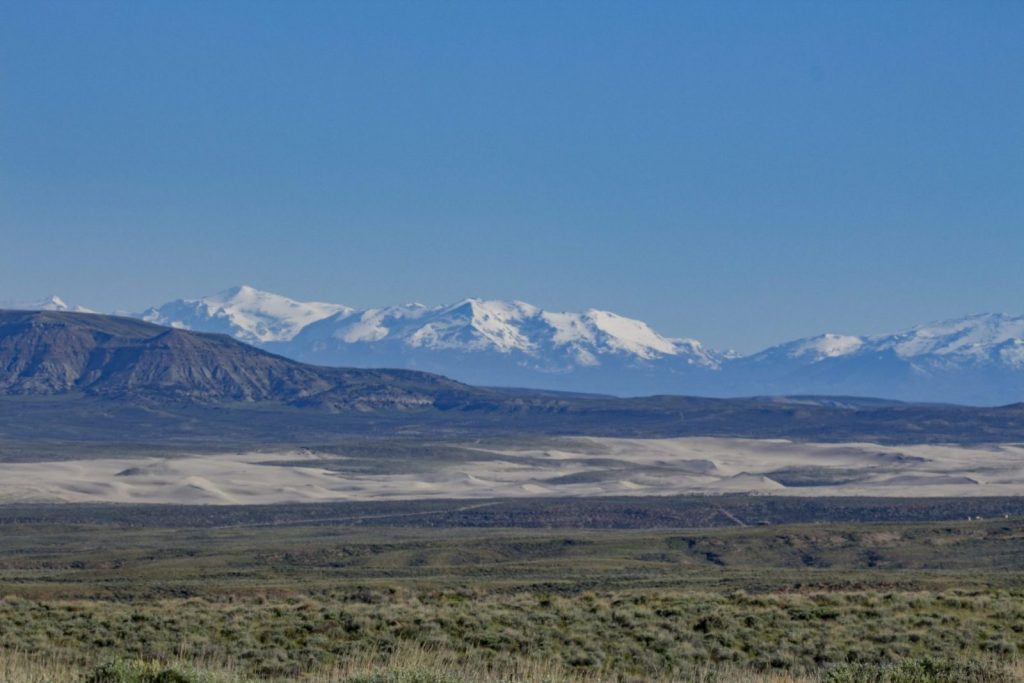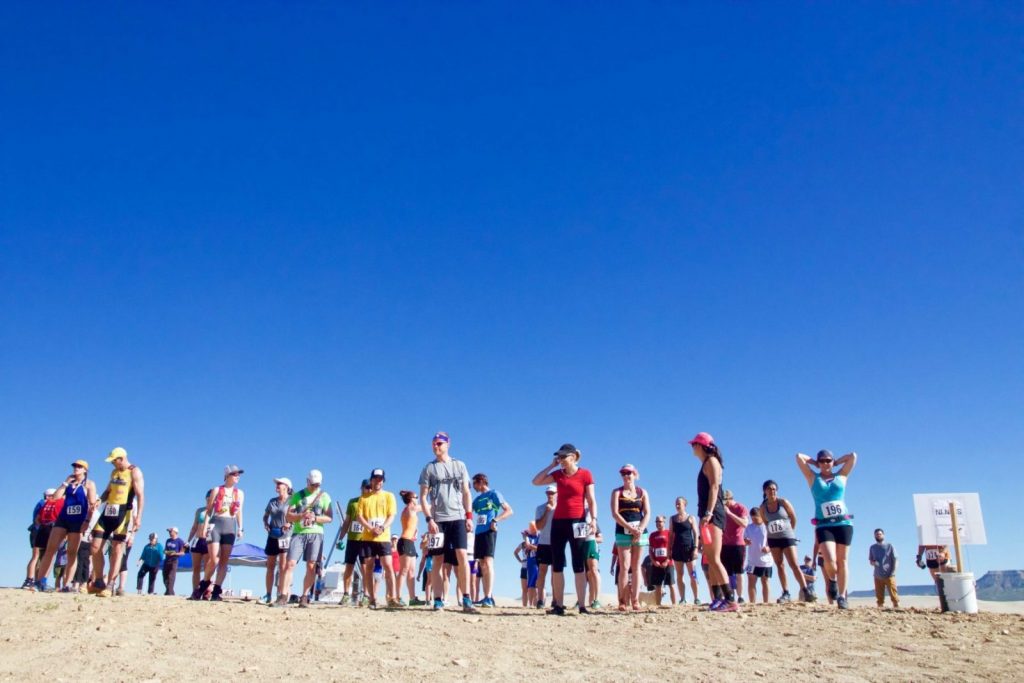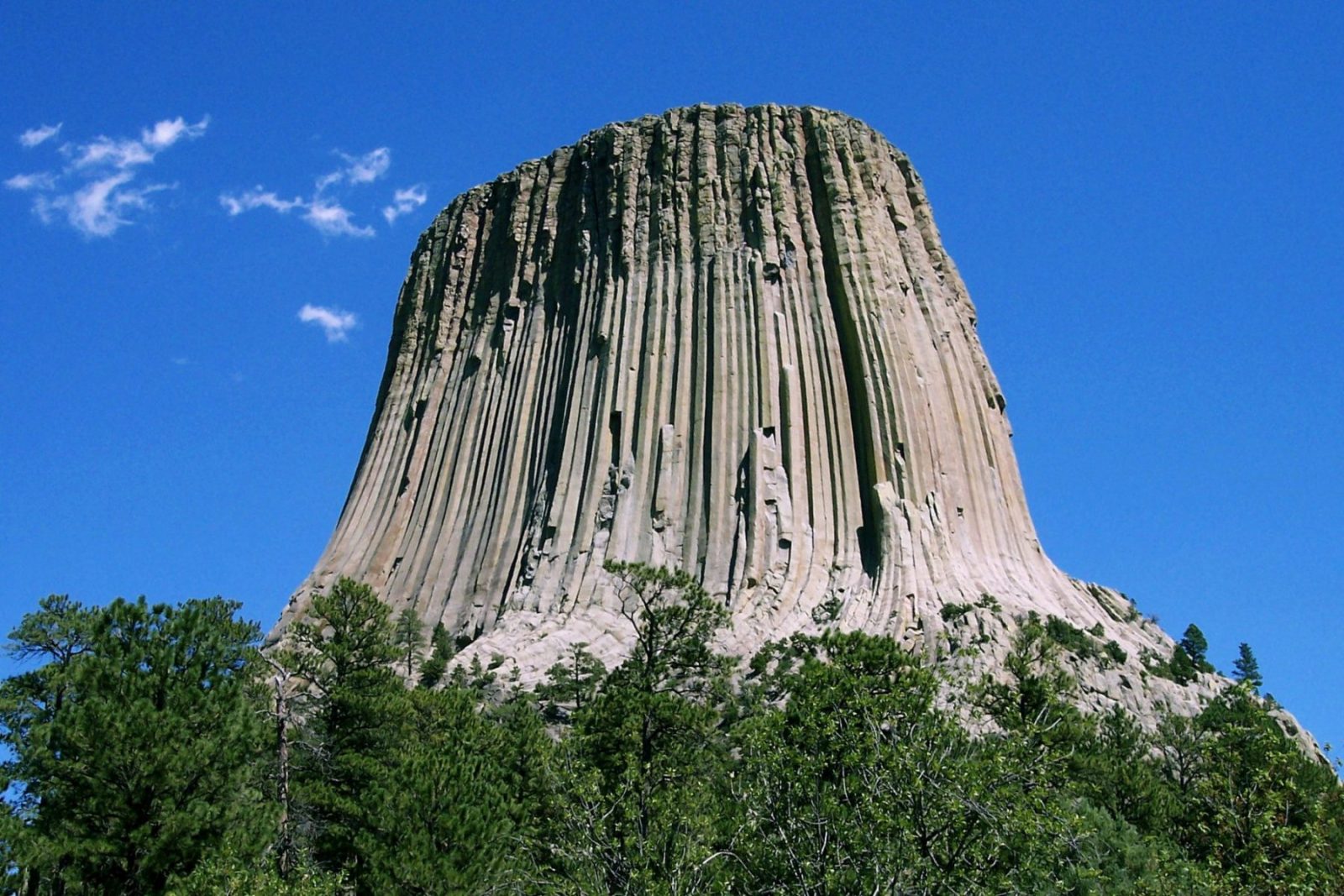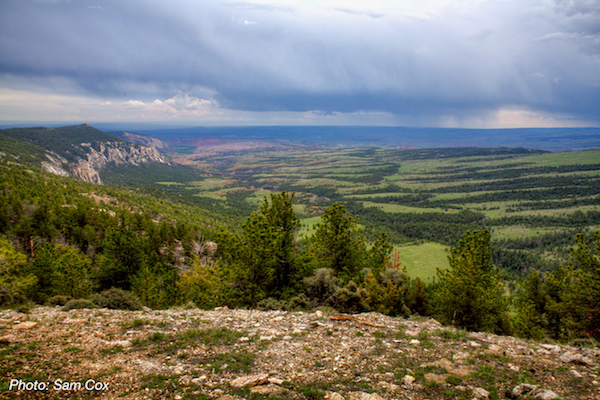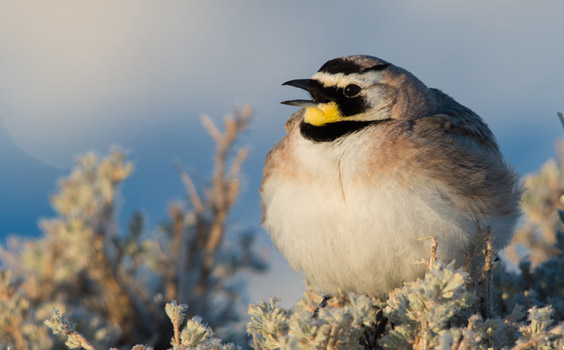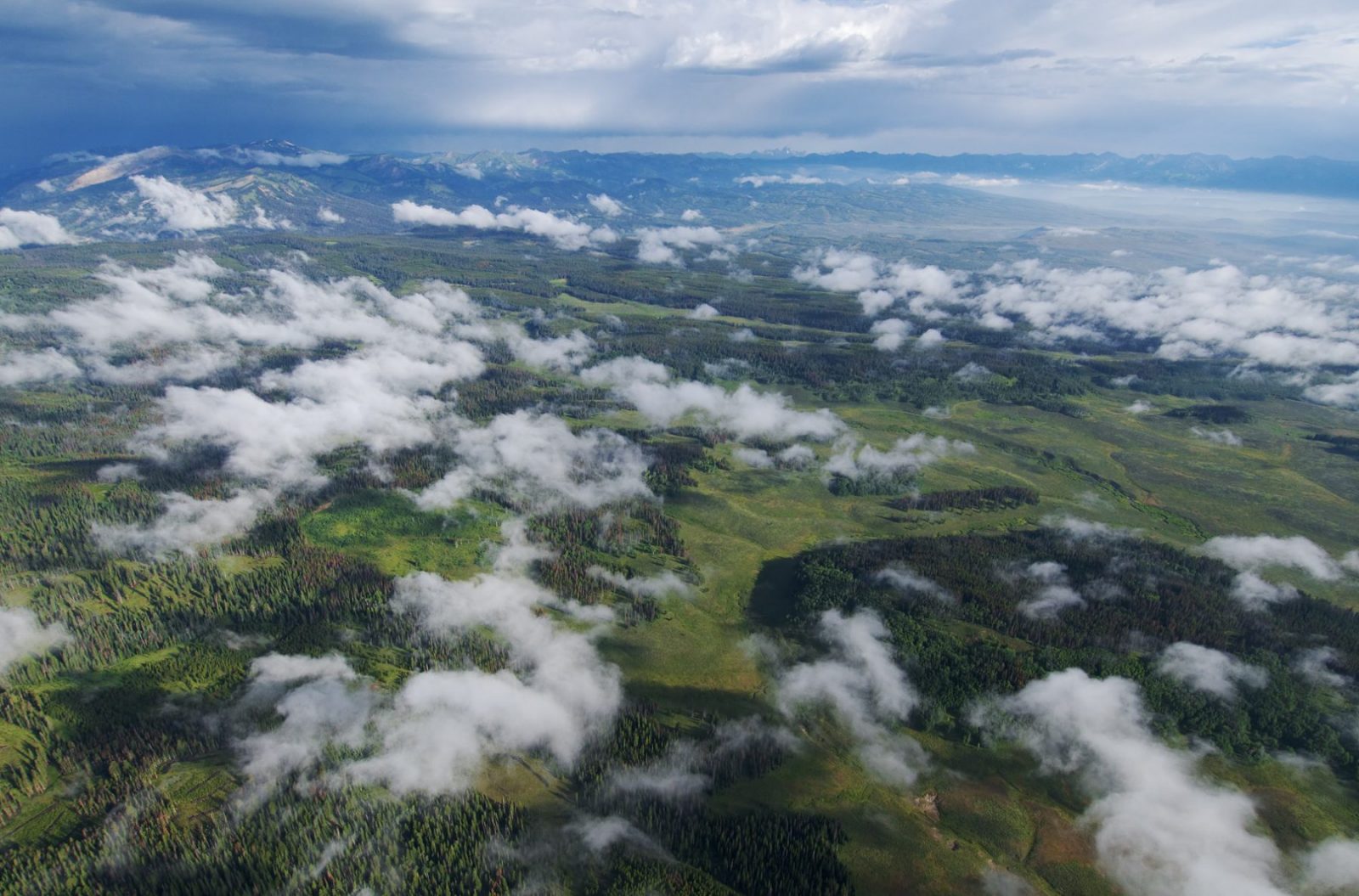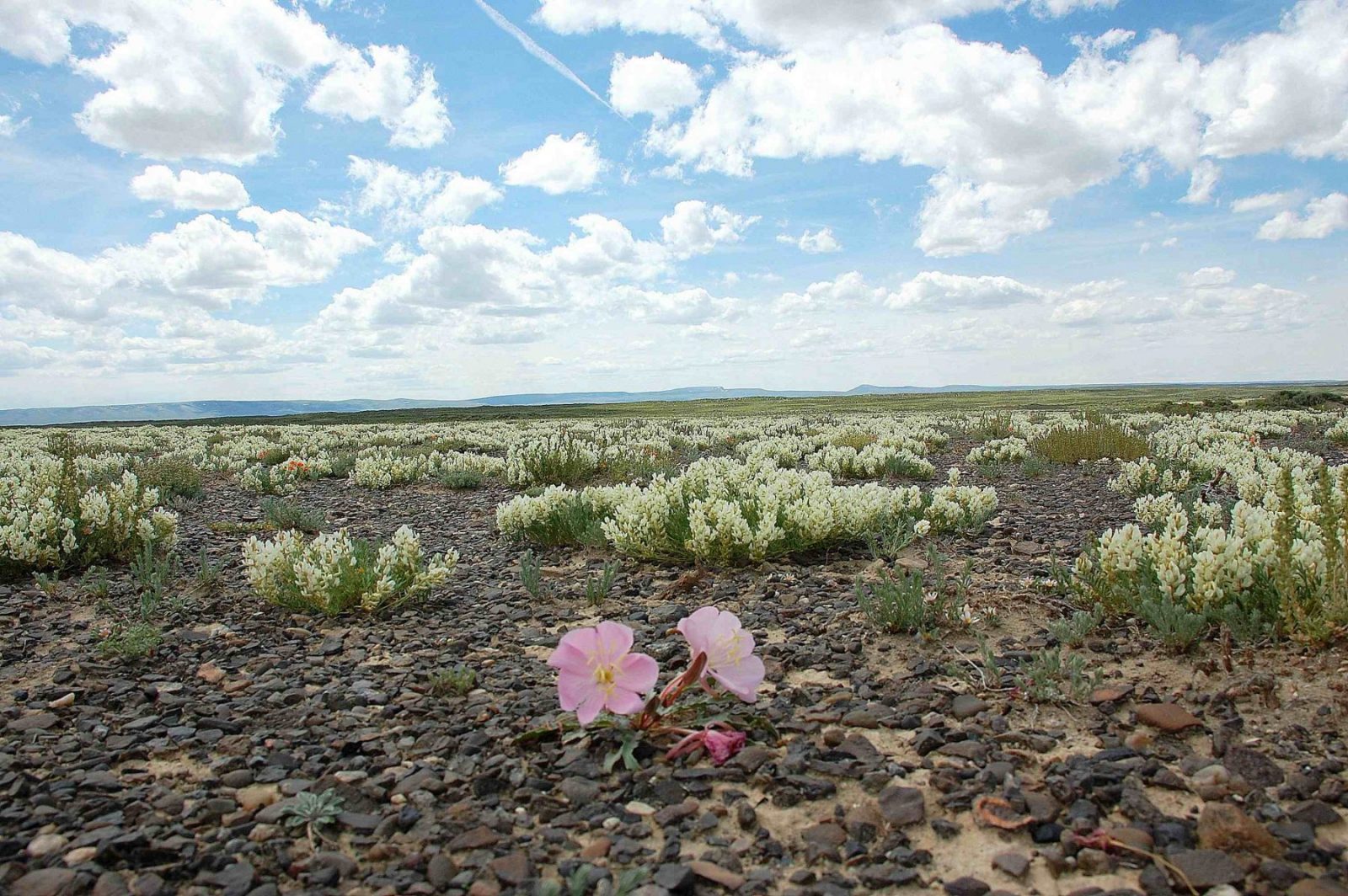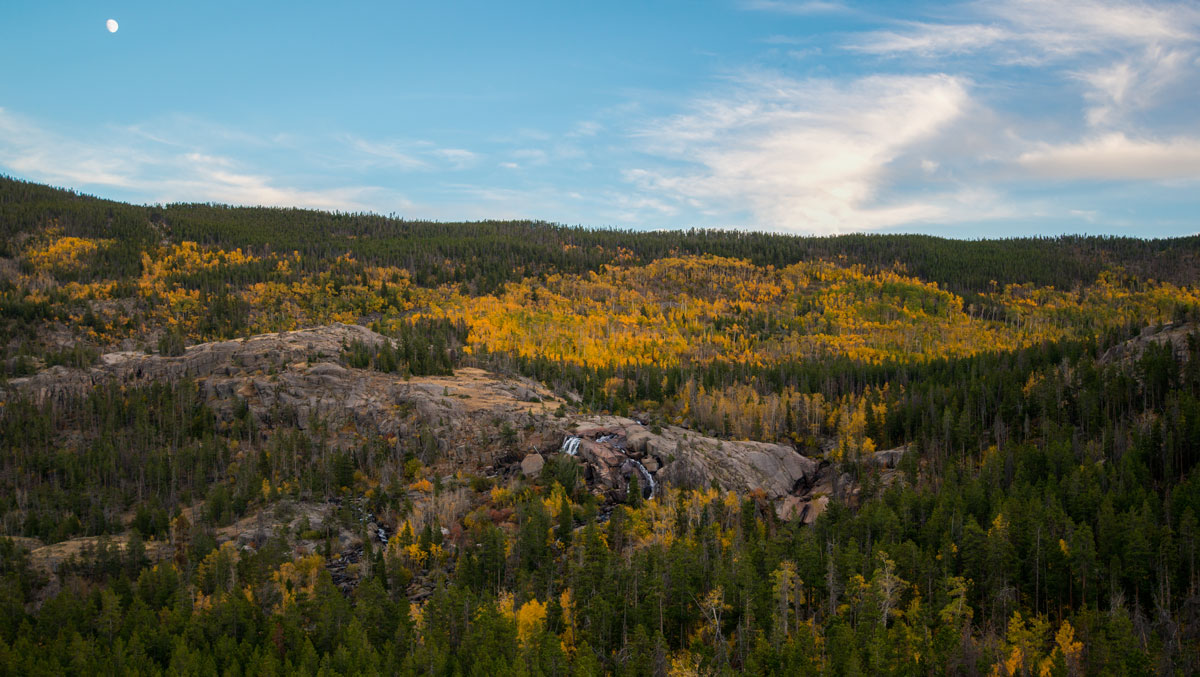Ever been curious about what was happening on the other side of the lens at the moment a particularly gorgeous shot was snapped? So have we, because we know that simply looking at a picture only tells part of its story. For this picture, the story begins in the northern Red Desert.
If you’ve ever taken part in our annual Run the Red trail race, you’ve left your own footprints behind in the sand of this vast, scenic landscape. If you’ve never been to this area of Wyoming, we assure you it’s an experience you’ll never forget—especially if you get to hear the Killpecker sand dunes sing.
The science behind their song is simple—the round, highly polished grains of sand are stimulated by movement, such as footfalls or wind, and their “voice” is created as a result—but the effect is nothing short of magical.
It was in the midst of this majestic landscape that Colorado-based conservation photographer Dave Showalter snapped the striking shot above.
(You may remember seeing it as a featured image in our 2014 “Celebrating the Red Desert” calendar.)
On the morning he captured this image, Dave had headed out into the Killpecker dune fields in search of seasonal “dunal ponds,” which are naturally formed in the spring when embedded ice crystals in the sand begin to melt.
Going into the shoot, Dave had hoped to get a few shots of high-desert wildlife quenching their thirst at one such pond; although he didn’t find quite what he was looking for, he found something just as captivating.
“Well into the dune field, I realized the ponds had dried for the season and I turned to see my tracks leading from the Boar’s Tusk. It’s a different take on an iconic and sacred Wyoming landmark in an ecologically sensitive place, with tracks lending a feeling of being there.
One learns to expect surprises and take what nature gives you in such a dynamic landscape. On a windless night, with just a few distant songbirds breaking the silence, I lingered until the light had long faded—one of the most gorgeous evenings I’ve ever spent in the outdoors.”
The Red Desert has always held a special place in the Wyoming Outdoor Council’s heart; in fact, we’ve been working to protect it since our inception in 1967. It’s the landscape where Wyoming native Tom Bell—decorated World War II veteran and this organization’s founder—experienced solace after the war when his plane was shot down; he lost an eye, and nearly lost his life as well.
It was in Wyoming’s wild landscapes that Tom found spiritual and psychological healing, and his life-changing experience in the Red Desert inspired him to create the Outdoor Council to protect the Desert and similar places for future generations.
Photographers like Dave help us to continue this work in Tom’s memory by ensuring that some of our state’s most stunning moments and places are captured forever and illustrated for the world to see—and it’s thanks to passionate members like you that these sacred Wyoming landscapes will be protected for future generations to enjoy.


